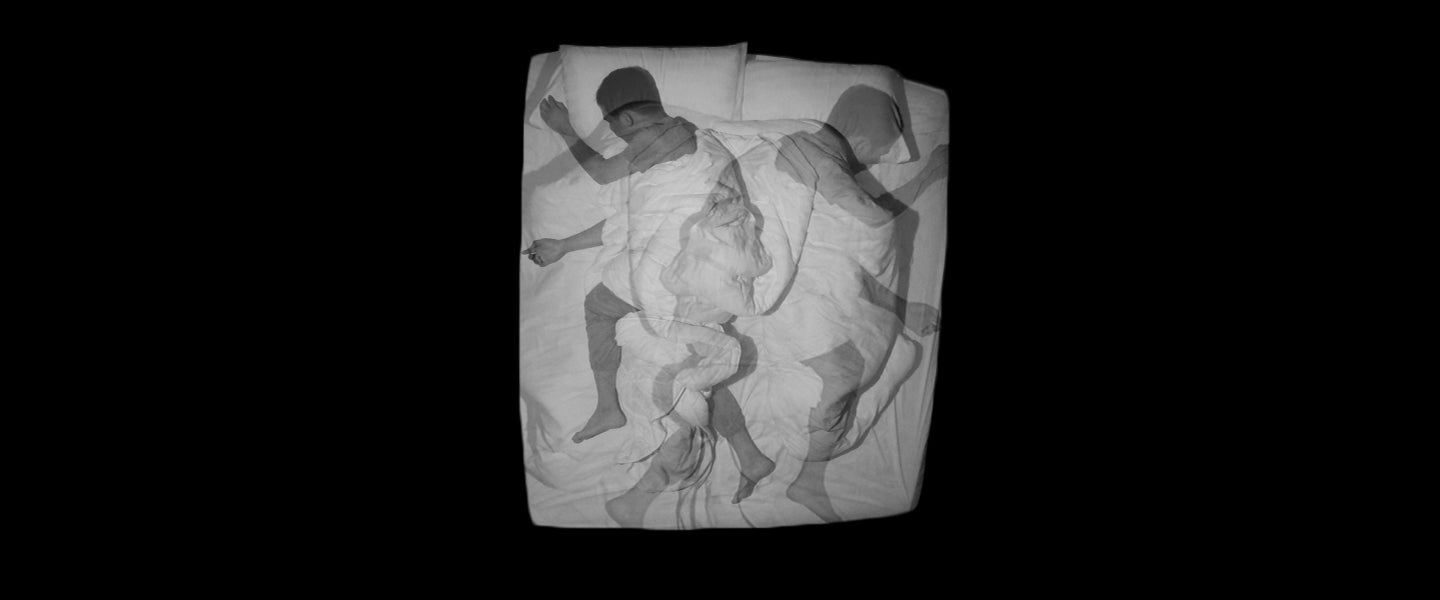Human beings have a preferred side of the bed they sleep on, and those sides are sacrosanct — this is a universal, self-evident truth, right? Clearly not to a certain brand of perv who has never met a bedside he or she couldn’t ditch in a heartbeat. This absolute barbarian, this loathsome sadomasochist, can, at the drop of a hat, pass out on either side of the bed with no questions asked and, bewilderingly, no complaints come the morning light.
They switch sides of the bed. Regularly.
Feel free to doubt the gruesome story of a man called Steve who says he and his partner, Amy, do precisely this sort of nasty side-swapping business in the privacy of their own home bed. And worst of all, they like it.
We were just chatting in work and apparently it's weird that Amy and I don't sleep on the same side of the bed every night. Some nights I like to sleep by the window, some nights the door. It's not really that unusual, is it?
— Steve O'Rourke (@steveohrourke) March 22, 2019
And people were like, ?
The fuck?
— Lizzie O'Leary (@lizzieohreally) March 26, 2019
Trying not to make too big of a deal out of it, someone tried to tell him, gently, that this is absolutely bananas.
That's extremely fucking weird, actually.
— Colin O'Hara (@colinpohara) March 22, 2019
Some people never got the human handbook, it seems. This is not how people work.
But why? Everyone keeps saying it's weird, but nobody has explained why
— Steve O'Rourke (@steveohrourke) March 22, 2019
And kudos to this Colin person for taking one for the team and trying to make sense of it for Steve. “It’s a bit like saying, ‘I think I’ll go sleep in the neighbor’s house tonight,'” he tweeted.
Well.. Its just.. I don't.. You have a side of the bed, and that's your side of the bed, and they have theirs. And that's that. It's a bit like saying, "I think I'll go sleep in the neighbors house tonight"..
— Colin O'Hara (@colinpohara) March 22, 2019
And Steve just didn’t get it:
You don't have a side of the couch, or a set seat at the table. Just adding an extra resting place
— Steve O'Rourke (@steveohrourke) March 22, 2019
Even Keith Olbermann tried to get in on this:
Wait. Do you sometimes call yourself Steve, and sometimes call yourself by your wife’s name?
— Keith Olbermann (@KeithOlbermann) March 23, 2019
And people were like, ?
— Dan Warren (@DanWarren1982) March 23, 2019
And other people were like, ?
How have you found someone else to share a bed with who is also happy with these shenanigans?? The only reason I’m still with my husband is because I fear a future partner might want my side of the bed.
— Twinks (@tinytwink) March 23, 2019
Clearly, most people are so devoted to their “side” that they will demand compliance from loved ones whose sides are incompatible. It’s like calling shotgun:
New husband was told: this is MY side. It had been his side in his first marriage but in the throes of early love he was amenable to switching. You gotta tell them immediately.
— (((Lisa Solod))) (@lisasolod) March 25, 2019
People who sleep totally alone still have sides:
I am alone in bed and still sleep on the same side I always do, partnered or not. It’s NOT negotiable. ?
— Deep State Jezebel (@mrh12834) March 24, 2019
And side incompatibility tears people apart every second of every day:
My partner and I both want the same side of the bed. He generally wins. This is why, 10yrs on, I won't marry him. We're obviously not compatible, but I need to find a more socially accepted reason to do a runner…but he's alright apart from that.
— Steph (@TeaToastParis) March 25, 2019
Some people didn’t even believe him:
Fake news as this cannot be possible. Right side of the bed for me near the window and it’s not negotiable. ???
— Caroline Belton (@Cazzb66) March 25, 2019
And then other Side Freaks revealed themselves:
I do the same with my husband, he asks to change side all the time, doesn't bother me at all ?
— Suzette Hankin (@furryloving) March 25, 2019
So I reached out to Terry Cralle, a registered nurse and certified sleep educator, to explain this madness. Cralle admitted she herself would have a difficult time with this situation.
“I am one of those folks who consistently does what we call ‘assuming the position,’” Cralle says. “When it’s time to fall asleep, I always sleep on the left side of the bed (from a facing-the-bed view), and I sleep on my right side (cannot fall asleep facing bed partner — too hot) with head just so, arms just so, etc. I can’t imagine changing that around.”
That’s still the case for her even in an unfamiliar environment, such as a hotel room, even without her usual comforts. “I think the habit/consistency/routine/familiarity of being so particular about that goes a long way in getting me comfortable and helps me fall asleep,” she said. “especially in an unfamiliar environment.”
Cralle points toward some research that found in reality, most people aren’t this nutty about their side of the bed. The survey found that 40 percent of Americans have always slept on the same side of the bed, but that means 60 percent are sleeping on a side of the bed they didn’t consciously choose. About 20 percent said of those people said that if they could get a do-over, they’d pick the other side. More people sleep on the right side of the bed, and it’s men who outnumber women on this preference by an eight percent lead.
What’s more, almost half of the people surveyed said when they first moved in with their partner, they both wanted the same side of the bed, and 79 percent of them caved (usually the man) to the other’s preference. About 20 percent of people find it extremely challenging to switch sides, and for a smaller percentage of 5 to 6 percent, it’s as big of a deal-breaker as liking the wrong sports team.
But again, only 20 percent of people said it would be extremely difficult to switch. Which means that our horror at hearing about Steve and Amy might be misplaced. Maybe we’re ignoring the fact that many of us have probably changed bed sides before, or we’re just the vocal minority in the bed-side wars.
Most people are not that attached to a certain side of the bed. What we are all probably attached to is whatever familiar comforts we need to fall asleep, which could be the side of the bed or some other object or condition.
Cralle said that some people may sleep on whatever side of the bed is nearest the bathroom, for instance, which means that everyone has a different “consistency” they gravitate toward, which can be as simple as the nearest preferred resource. In the survey, participants noted that most of them prefer the side of the bed near, in order of importance, an outlet, the bathroom, a window or a door.
Steve came back on Twitter to give a little more context to that effect:
Feel like I need to point out the following:
1. First one in chooses
2. We've never disagreed over it
3. We move pillows and books as we move
4. We don't change every single night
5. Neither of us are aliens— Steve O'Rourke (@steveohrourke) March 24, 2019
In other words, for them, it’s not the side that matters as much as having their preferred sleeping aids, and in Steve and Amy’s case, that’s their pillows and books. And for you it can be whatever you like.
“It’s about what works for you!” Cralle says. “Consistency is a major component of sleep health. We want sufficient sleep on a consistent basis (not just on the weekends) and we need a consistent bedtime and consistent bedtime routine, and of course, doing what makes you relaxed and comfortable for bedtime and sleep.”
Cralle says that we should consider that if we don’t sleep well, or if our bedpartners don’t sleep well, the side we’re on could still be the culprit. “Swapping sides for a few nights may be an easy way to see if that helps matters,” she writes. She also wonders if they may need a new mattress, and that’s what prompts their constant side-swapping.
Of course, just because it turns out that swapping sides isn’t so unusual, that doesn’t mean Steve and Amy aren’t still total freaks in the sheets. But at least it’s on their terms. And since they’re already paired up with each other, none of us has to worry about it causing trouble in our beds.

